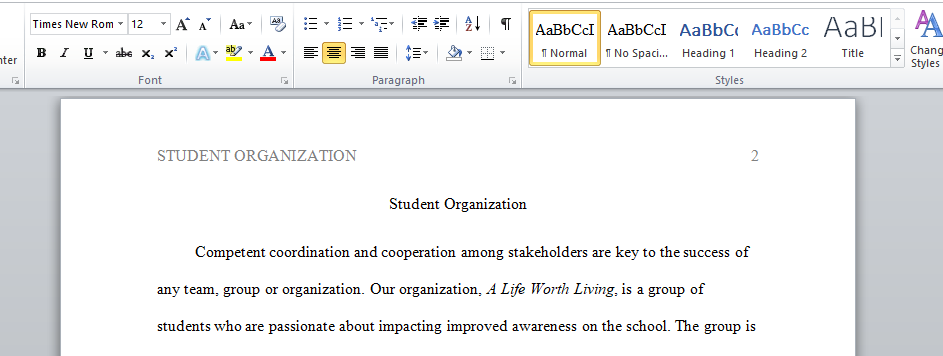How did your outline evolve form the basic outline you started with
Attached Assignment: As you transition your outline into your Expository Overview,
respond to the following:
1. How did your outline evolve form the basic outline you started with into a fully
developed outline?
2. What have and what will you do to evolve your developed outline into an
Expository Overview?
3. How did you make space for style and what elements of style will you include?
Evolving the Outline
In Project 1, we considered how to transition from an outline (Task 6.1). While the Expository Overview is quite different from the Literacy Narrative, some of the techniques we practiced in relation to the evolution of the outline overlap.
To start, look at your outline closely and let yourself think. Is your answer to the question clear? How can it be strengthened? Do you use it in the introduction and the conclusion in an interesting way that brings the Overview full circle?
Consider what texts you decided to include in your discussion of the writing practices. Are they the best examples of the way the discourse community uses writing to communicate? Why did you pick them? Do they contribute to a larger purpose and serve to answer the overarching question in a compelling way?
And what about your overview of your discourse community. What information did you include and exclude? Does it tie directly to the written samples you include? Is content from Swales integrated in a relevant and productive way? Are all in-text citations and the Works Cited prefect? Is there other source material that could add to the exploration and explanation?
Before you link together the bullets or sentences with transitions and topic sentences, is the order intentionally constructed in order to facilitate flow? Have you worked to appeal to the audience of your peers and to your Instructor? Just like you want to read interesting papers from your peers, you will want to provide your peers and your Instructor with an informative and enjoyable read.
The basic outline can also be expanded if you aren’t sure how to populate a section or paragraph. Where would you list the goals of your DC and what connects the members and where they connect and communicate? Where would you note the specific practices and jargon members are expected to understand and execute? Where would you discuss how the literacy practices bring the members together and help them reach their goals? Within the outline structure, feel free to list the specific points you want to cover and information you plan to include as you build out sentences and paragraphs.
In addition to ensuring that your Expository Overview has all the required elements, employing and evolving an outline allows for the space that opens from building on a solid foundation. Style is the icing that turns bread into cake. Creativity, innovation, and playfulness are important elements of writing and communication, even in formal forms.
Some elements of style are traditional, like avoiding source material in the introduction and conclusion (not introducing sources at the beginning or closing with them guarantees that your voice will lead and finish, which is valuable in all communication), avoiding starting or ending a paragraph with source material (for the same general reason), and avoiding pronouns (especially to start a sentence, where the lack of clarity is more evident). Different academic genres, and the associated discourses, offer differing amounts of space for those who know the rules to break them purposefully and beautifully.
Other elements of style are about the interaction between audience and author. Think of how tailored your texts are depending on which friends you are texting. Think of your funniest friend and how you are funnier with that friend. Think of how the written communications you share with the fun friend are different and playful and innovative. When you are racing toward a deadline and desperately trying to submit something, anything, hopefully something that fulfills the assignment and earns you a passing grade, you don’t have time or energy to play. There is no place for creativity or innovation. Sometimes that is where you will be, and when you recognize that you are there, you know what you need to do. But by adding time and space in your planning, even your formal written assignment can include your style and space for you to shinein ways the set you and your writing apart.
Like the wide variety of literacy practices and the moves made between readers and writers that occur within those practices, there are many ways to be creative and innovative, so if you don’t know how to be creative, create an option based on what you know about your audience and genre. Knowing that you have already crafted a solid submission that will earn a good grade gives you the freedom to start to explore and develop yourself as a writer within an Academic Discourse Community.
Answer preview:

Words:1,007
